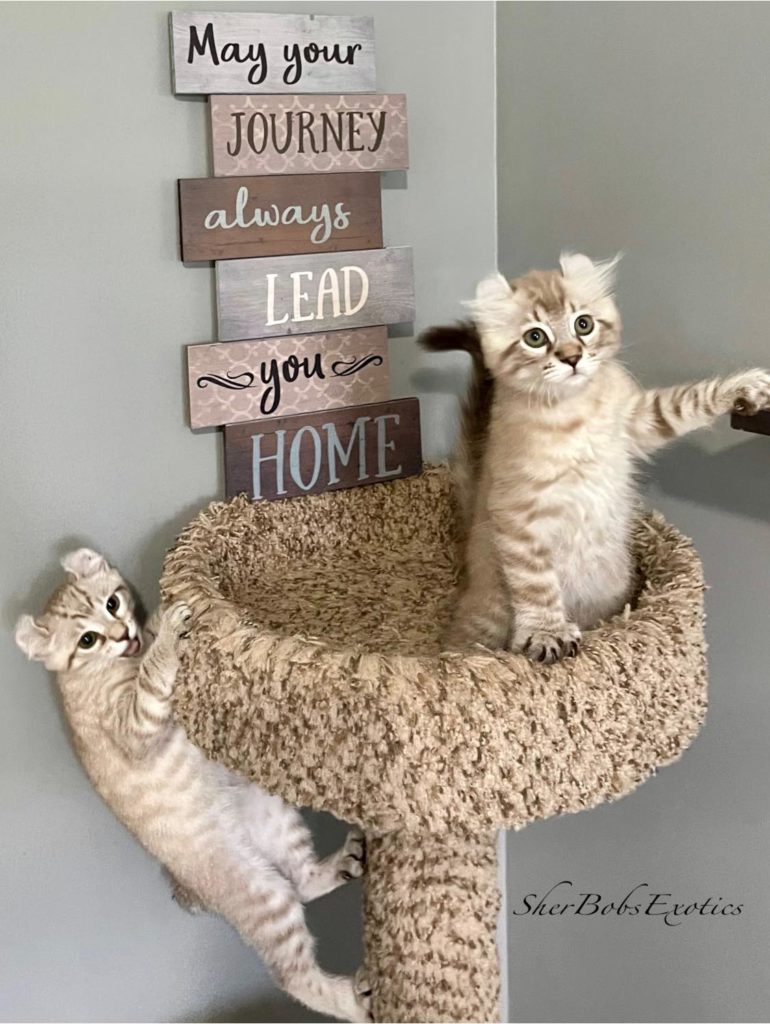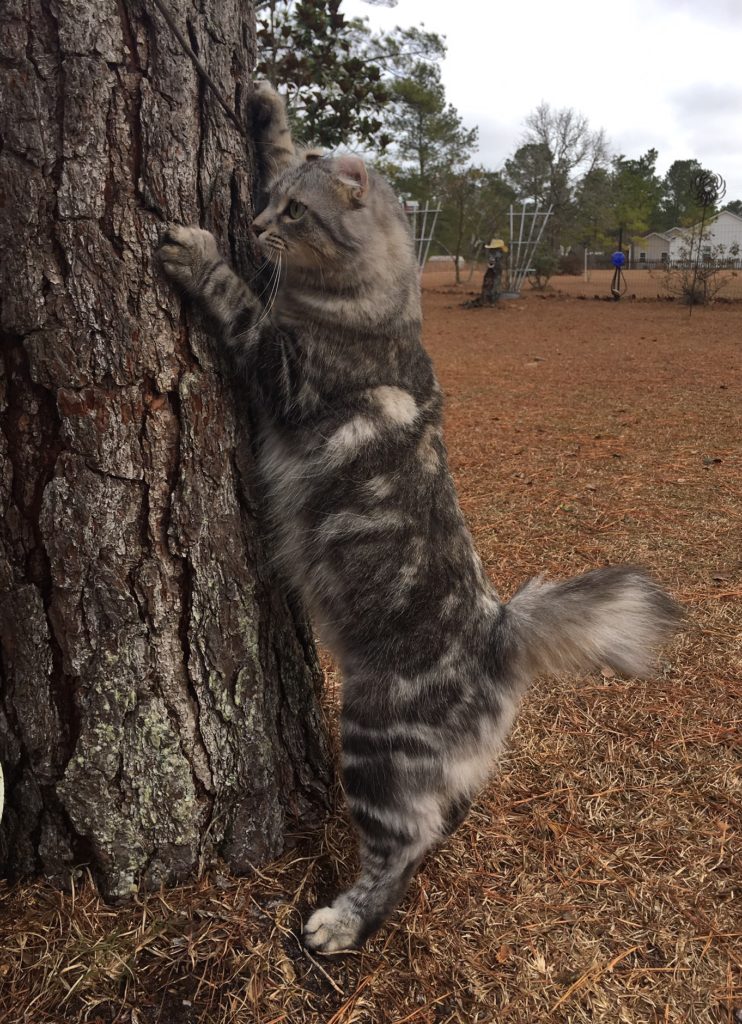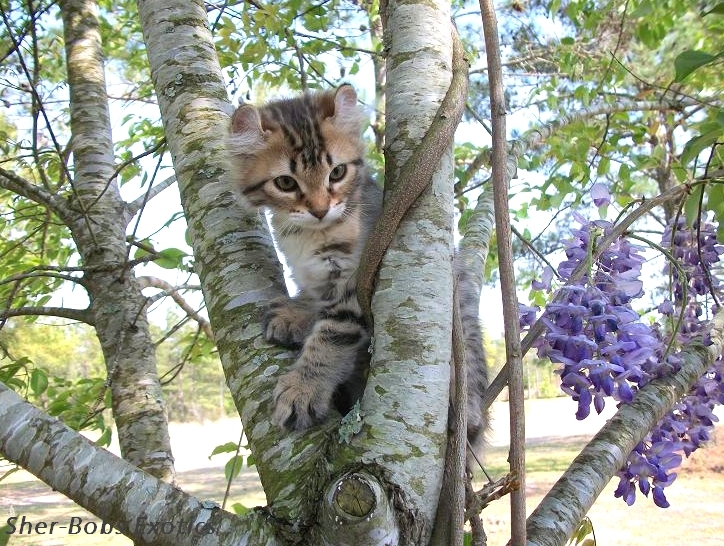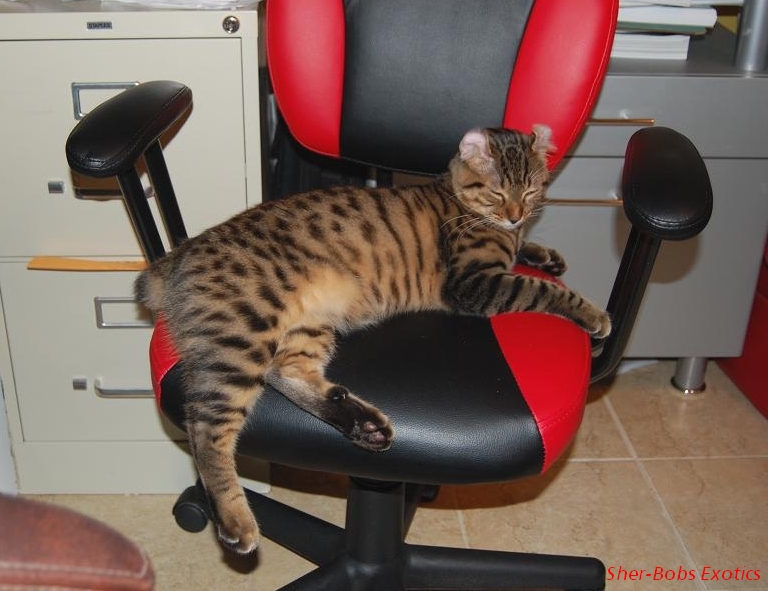The Highland Lynx Cat
Personality
The Highland Lynx is a beautiful, loving cat who enjoys spending time with his people. They are smart, fun-loving cats who take well to training when it’s done in a positive manner with lots of food rewards, praise, repetition and play.
They make wonderful companions and generally get along well with dogs and other pets. Some are shy at first but will soon overcome shyness as their playful nature takes over with your loving care & plenty of room to play where they feel safe. They often display dog like personality such as playing “fetch” or enjoying a bath with their owner.
Characteristics
These gorgeous cats have a number of unusual characteristics which set them apart from other breeds. Many of them have the trademark curled ears (ranging from barely curled back ears to tightly curled), while others may have large, straighter ears of the Desert Lynx. The tails can short bobtails, hock length as with the bobcat, or long tail as in domestic cats. The feet of this breed are often very large and poly-dactyl, meaning they have more than the normal number of toes (such as the famous Hemingway Cats). And lastly, the ears and toes are often tufted with fluffs of hair.
The Highland Lynx body type is long, strong & muscular, with longer hind legs. They tend to be larger than average cats with females weighing 8-15 lbs. at full maturity and males 12-20 lbs. 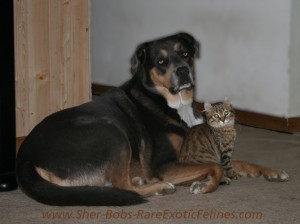 They have stunning leopard or marble or tawny markings/patterns and come in a beautiful array of colors, such as bronze, snow, mink, chocolate, cream, blue, tawny, etc. Occasional “yips” or “chirps” and other types of vocal calling are often observed which comes from their wilder ancestors, even though the Highland Lynx is purely a domestic breed.
They have stunning leopard or marble or tawny markings/patterns and come in a beautiful array of colors, such as bronze, snow, mink, chocolate, cream, blue, tawny, etc. Occasional “yips” or “chirps” and other types of vocal calling are often observed which comes from their wilder ancestors, even though the Highland Lynx is purely a domestic breed.
Care
Before getting into the specifics of Highland Lynx care, here are a few tips regarding things your cat will benefit from.
~ Regular play time and plenty of exercise is important for your cat or kitten and also contributes to bonding time with a new pet.
~ All Pets can benefit from added Probiotics in their diet. These can help replenish loss of good bacteria due to medicines, antibiotics and age.
~ Growing some fresh cat grass (wheat grass) in a sunny spot can also aid in keeping your cat healthy. Most cats will really appreciate a container of fresh green grass to munch on occasionally.
Feeding
Cats and kittens are obligate carnivores which means they require food that is mostly animal protein in order to keep them healthy and prolong their life. Their diet should be primarily moist foods (less dry food) that are grain-free (they cannot digest carbs/grains well). Avoid foods containing animal by-product, sugars, grains, preservatives, colors, and other fillers. If you feed your cat/kitten as close to what it would eat in the wild as you possible you will enable it to thrive.
Grooming
CURLED EARS: The Highland Lynx has a smaller ear canal due to the hard cartilage that causes the ears to curl. They also tend to produce more ear wax than most cats. This excess is often mistaken for ear mites or infection. Because of this excess wax and the smaller opening, it is important to clean their ears occasionally with a natural cleaner, so as to avoid ear infections. Start young and use gentle cleaners to help prevent serious issues with their ears.
COAT: Highland Lynx cats may require less grooming than some breeds but a good combing keeps shedding down and helps to avoid matting . It’s important to inspect your cats skin and coat health while brushing. Start your kitten young in order to create an enjoyment of the experience.
Toenails/Claws: In general the Highland Lynx has more toes than a domestic cat and all those toenails need to be trimmed to avoid them growing into their paws or snagging on your skin, clothing, furniture, etc. It is very important to begin trimming your cats nails at a very young age so they will be used to the process, which you should do aprox. once a month.
*Important Note
It is our belief that under NO CIRCUMSTANCES is DeClawing ever an acceptable practice for any cat owner! Please note that declawing of SherBobs kittens is not allowed as it is considered a cruel and unnecessary amputation!
If you have issues related to your cats claws, please be sure you
1.) Trim their nails regularly
2.) That you have provided several scratching posts for him/her.
Read More about Declawing by clicking the button below!
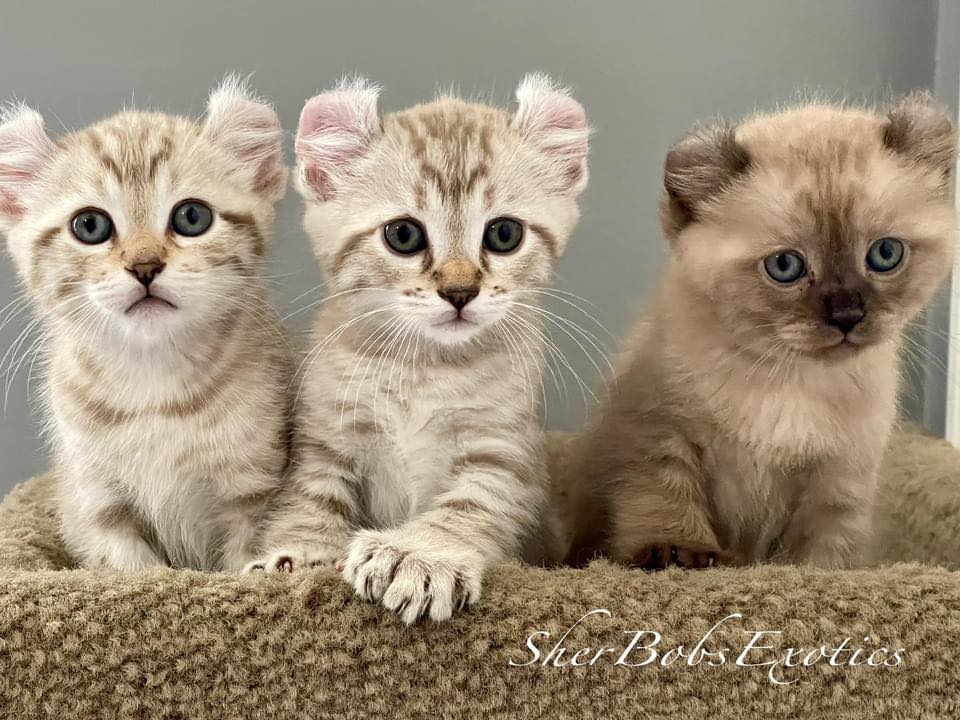
Highland Lynx Cats get along well with children and other pets (such as dogs) when properly introduced and handled.
Highland Lynx should never be allowed to roam freely outdoors without a harness or protective habitat. They have been stolen, killed by dogs/coyotes and shot as bobcats.
Highland Lynx cats are incredibly smart and respond well to training. They can be taught to do tricks, walk/ride with you in a harness/leash and much more.
